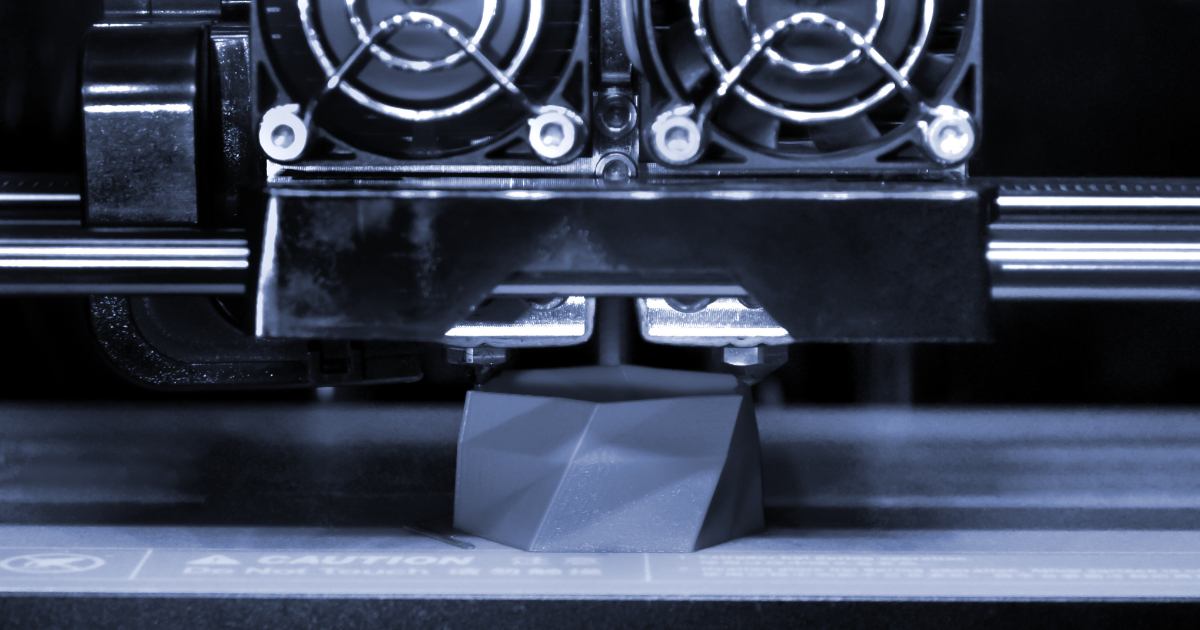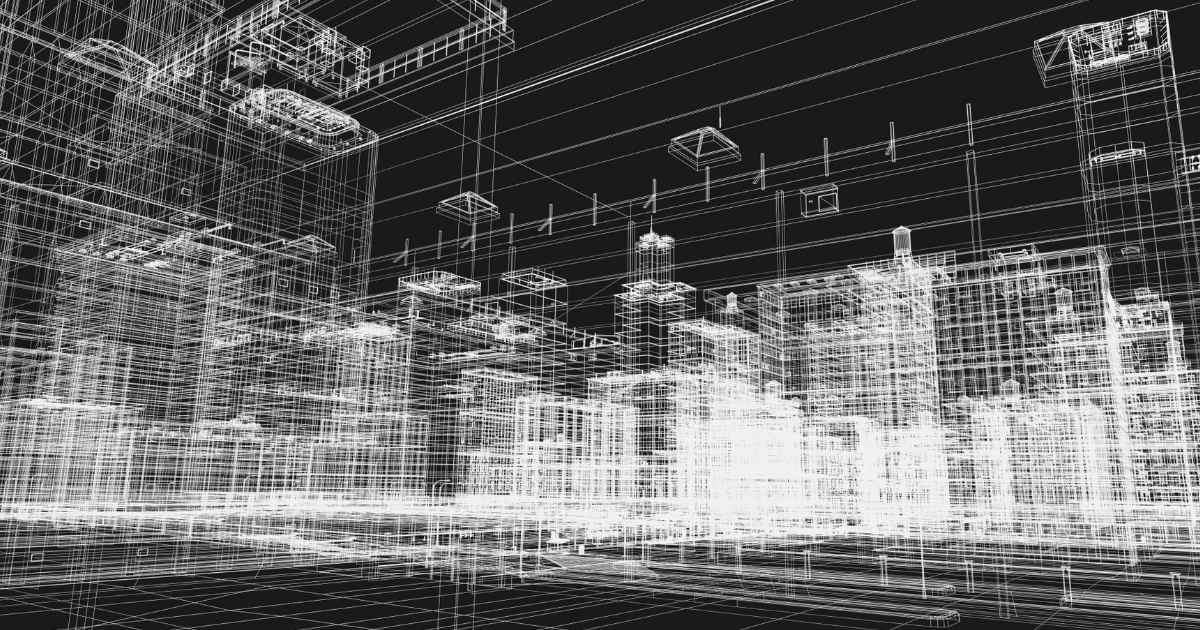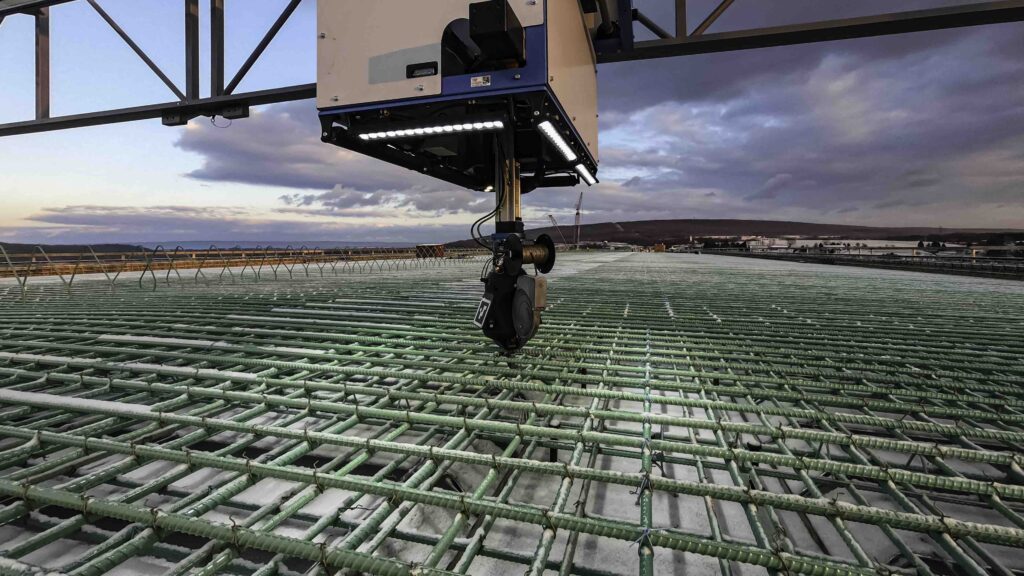In construction, rebar refers to reinforcing steel bars that provide additional strength and durability to concrete structures. These structures can include buildings, bridges, dams, and other infrastructure. Rebar is essential to many construction projects as it helps prevent the concrete from cracking under the structure’s weight or external forces such as wind or earthquakes.
Concrete structures would be weaker and more prone to damage and failure without rebar. Therefore, high-quality and well-designed rebar is best for the safety and longevity of the built environment. In recent years, rebar innovations have led to rebar design and manufacturing innovations, resulting in more robust, durable, and efficient rebar products. These innovations can change the construction industry and shape the future of infrastructure development.
3D Printing of Rebar
 The Process of 3D Printing of Rebar
The Process of 3D Printing of Rebar
3D rebar printing involves specialized printers that can create complex, customized designs for reinforcing steel bars. The process starts by creating a digital 3D model and then uploading it to the printer. The printer then uses a specially formulated steel composite material to make the rebar by layering the material in a controlled manner according to the 3D model.
Compared to traditional manufacturing methods, 3D printing of rebar offers a high degree of design flexibility, allowing intricate designs that would be difficult or impossible to produce using standard methods. This technology also minimizes waste, as it enables the production of precise amounts of rebar, which reduces the amount of scrap material.
3D printing of rebar can potentially improve the speed and efficiency of construction projects by streamlining the production and delivery of customized rebar. High-precision 3D printing enables rebar production with exceptional accuracy, constructing stronger and more durable structures.
Overall, 3D printing of rebar offers significant benefits in terms of design flexibility, waste reduction, accuracy, and potential efficiency gains, which make it a promising technology for the construction industry.
Benefits of 3D Printing of Rebar
The primary benefit of 3D printing of rebar is its high degree of design flexibility. It is best to create intricate, complex designs for rebar that are difficult or impossible to produce using traditional methods. This flexibility allows architects and engineers to design robust, durable, and visually striking designs.
Another benefit of 3D printing of rebar is that it can help to reduce waste. Traditional rebar manufacturing methods involve the production of large, standardized batches of rebar, which can result in a significant amount of scrap material. Through 3D printing, construction projects can minimize waste and reduce their environmental impact by producing rebar in precise amounts.
3D printing of rebar can lead to more robust and more durable structures. Because this technology allows for the creation of rebar with a high degree of precision, it is possible to produce rebar that is more uniform and consistent than traditional rebar.
Specific Examples of 3D Printed Rebar
Different construction projects have already utilized 3D-printed rebar. For instance, in 2019, a pedestrian bridge in Madrid, Spain, incorporated 3D-printed rebar. The advancements in 3D printing technology exclusively enabled the creation of the bridge’s intricate lattice structure.
In Dubai, United Arab Emirates, a construction project utilized 3D printed rebar alongside traditional concrete to construct a 3D printed concrete office, showcasing another instance of incorporating 3D printed rebar in construction. The 3D-printed rebar reinforced the concrete structure, providing additional strength and durability.
Winsun has used 3D printing technology in China to create entire buildings, including the rebar. The company can create large-scale structures with intricate designs not possible with traditional methods.
The Potential Limitations and Challenges of 3D Printing of Rebar
While 3D printing of rebar offers many benefits, there are also potential limitations and challenges. One of the primary challenges is the current cost of the technology. 3D printing equipment and materials are expensive.
Another potential limitation is the current size limitations of 3D printing equipment. 3D printers are still limited in terms of objects produced. This may make it challenging to produce large-scale rebar components for use in major infrastructure projects.
There may be concerns about the durability of 3D-printed rebar. While early studies have shown promising results, it is still unclear how well 3D-printed rebar will perform over time, particularly in harsh environmental conditions. Additional testing and research are needed to understand this technology’s long-term durability fully.
There are challenges relating to adopting 3D printing technology in the construction industry. This technology requires specialized expertise and training. Additionally, there may be resistance to change from traditional rebar manufacturing and construction methods.
While 3D printing of rebar offers significant potential benefits, there are challenges before this technology can be widely adopted in the construction industry.
The Future Implications of 3D Printing of Rebar in Construction
The future implications of 3D printing of rebar in construction are significant. Technology can transform the way that construction projects are designed and built.
One potential application of 3D printing of rebar is in creating complex, customized structures. With the ability to produce rebar in precise amounts and with intricate designs, architects and engineers can develop more potent, more durable, and visually appealing systems. Additionally, 3D printing of rebar can potentially improve construction projects by reducing waste and streamlining the production and delivery of rebar components. This, in turn, could lead to faster construction times and lower costs.
3D printing of rebar could improve the safety of construction projects by enabling rebar creation with high precision. This could result in structures that are more resistant to damage and failure, which could improve the overall safety of the built environment. As 3D printing of rebar becomes more widely adopted, it could also lead to advancements in other areas of construction technology. For example, it could inspire concrete manufacturing and design innovations, further improving structures’ strength and durability.
The future implications of 3D printing of rebar in construction are promising, with the potential to transform how structures are designed and built, improving efficiency, safety, and sustainability in the construction industry.
Nanotechnology in Rebar Coatings
 Use of Nanotechnology in Rebar Coatings
Use of Nanotechnology in Rebar Coatings
Nanotechnology in rebar coatings involves using tiny particles to enhance the properties of the coatings applied to reinforcing steel bars. This technology creates a protective layer around the rebar, increasing its durability, corrosion resistance, and overall lifespan.
Nanoparticles, typically less than 100 nanometers in size, are added to the coating material to improve its properties. These particles have a high surface area-to-volume ratio, which means they are more reactive and can bond more effectively with the rebar surface. One example of nanotechnology in rebar coatings is graphene, a solid and lightweight material. When added to rebar coatings, graphene can increase the strength and durability of the rebar, making it more resistant to damage and corrosion.
Overall, nanotechnology in rebar coatings offers significant benefits in improving the lifespan and durability of reinforcing steel bars. It has revolutionized rebar coatings that are produced and applied in construction projects.
Examples of Nanotechnology in Rebar Coatings
Nanotechnology in rebar coatings has been used around the world. For example, a bridge was constructed in Singapore using a rebar with a nanotechnology coating. The layer was designed to provide increased durability and corrosion resistance, which is especially important in the coastal environment where the bridge is located.
Another example of the use of nanotechnology in rebar coatings is a project in Australia, where a pedestrian bridge was constructed using rebar coated with a nanotechnology material. The layer was added to the rebar to increase its strength and durability, making the bridge more resistant to damage and corrosion.
Nanotechnology in rebar coatings has been used in the construction of offshore oil rigs, where the harsh marine environment can cause significant corrosion and damage to structures. The designs are better protected from the corrosive effects of seawater and other environmental factors.
These examples showcase the potential of nanotechnology in rebar coatings to improve the durability and lifespan of reinforcing steel bars in various construction projects.
Potential Limitations and Challenges of Nanotechnology
While nanotechnology in rebar coatings offers many benefits, there are also potential limitations and challenges. One of the primary challenges is the current cost of the technology. Nanotechnology coatings can be expensive, which may limit the use of this technology in some construction projects.
Another potential limitation is the potential for nanoparticles to agglomerate or clump together, which can reduce their effectiveness. Attention must be paid to the formulation and application of the nanotechnology coatings.
There may be concerns about the long-term durability of nanotechnology coatings. While early studies have shown promising results, it is still unclear how well these coatings will perform over time, particularly in harsh environmental conditions. Additional testing and research are needed to understand this technology’s long-term durability fully.
There may be challenges related to adopting nanotechnology coatings in the construction industry. This technology requires specialized expertise and training. Additionally, there may be resistance to change from traditional rebar coating and protection methods.
Future Implications of Nanotechnology in Rebar Coatings in Construction
Technology transform reinforcing steel bars are protected and maintained in construction projects. One potential application of nanotechnology in rebar coatings is creating more sustainable and durable structures. Extending the lifespan of reinforcing steel bars through nanotechnology coatings requires less material over time, reducing the environmental impact of construction projects.
Nanotechnology in rebar coatings can potentially improve the safety of construction projects by reducing the risk of corrosion and damage to reinforcing steel bars. This, in turn, could help to prevent structural failure and improve the overall safety of the built environment.
As the technology continues to evolve, it could lead to the development of innovative rebar coatings that offer even more excellent protection and durability.
Smart Rebar Technology
 Explanation of the Concept of Smart Rebar Technology
Explanation of the Concept of Smart Rebar Technology
Carbon fiber reinforced polymer (CFRP) rebar is a reinforcing steel bar made from carbon fiber and resin. This material is lighter than traditional steel rebar, making it an attractive option for construction projects.
CFRP rebar offers several benefits over traditional steel rebar, including increased strength and durability. Because it is made from carbon fiber, it can withstand higher levels of stress and strain than conventional steel rebar, making it ideal for use in structures subjected to heavy loads or harsh environmental conditions.
Another benefit of CFRP rebar is its corrosion resistance. Unlike traditional steel rebar, which is susceptible to rust and other forms of corrosion, CFRP rebar is non-corrosive, perfect for coastal environments or other areas where exposure to moisture is a concern.
Overall, the benefits of CFRP rebar make it a promising material for the construction industry, offering increased strength, durability, and corrosion resistance.
Benefits of Smart Rebar Technology
One of the primary benefits of CFRP rebar is its increased strength. Because it is made from carbon fiber, it has a much higher strength-to-weight ratio than traditional steel rebar, which can support higher loads without adding extra weight to the structure. This is an ideal material for use in bridges, high-rise buildings, and other facilities that require high levels of strength and durability.
CFRP rebar also offers increased durability over traditional steel rebar. Because it is non-corrosive, it can withstand exposure to harsh environmental conditions without deteriorating or losing its strength. This help in the optimistic lifespan of the structure and minimize the need for maintenance and repair over time.
This rebar is also more resistant to fatigue than traditional steel rebar. It can withstand repeated cycles of stress and strain without experiencing damage or failure. This is especially important in structures that will be subjected to high levels of cyclic loadings, such as bridges and buildings in areas prone to earthquakes.
Overall, the benefits of CFRP rebar make it a promising material for the construction industry, offering increased strength, durability, and resistance to fatigue and corrosion, which can help extend the structures’ lifespan and reduce the need for maintenance and repair over time.
Examples of Smart Rebar Technology in Construction Projects
CFRP rebar has found application in various construction projects worldwide. For instance, in Canada, a pedestrian bridge utilized CFRP rebar, enabling the construction of a longer span while meeting the necessary strength and durability requirements that would have been challenging with traditional steel rebar.
Another example of using CFRP rebar is a project in the United States, where a highway bridge was constructed using CFRP rebar. Using this material allowed the bridge to be built with a longer lifespan and reduced maintenance requirements while also improving the bridge’s safety by reducing the risk of corrosion-related damage.
In addition, CFRP rebar has been used to construct buildings with critical components.
Potential Limitations and Challenges of Smart Rebar Technology
While CFRP rebar offers many benefits, there are also potential limitations and challenges. The current cost of the material stands as one of the primary challenges. CFRP rebar can be more expensive than traditional steel rebar, which may limit its use in some construction projects.
Another potential limitation is the lack of standardization in the production and use of CFRP rebar. While traditional steel rebar, the production and use of CFRP rebar are still evolving, lacking a universal standard.
There may be concerns about the long-term durability of CFRP rebar. While early studies have shown promising results, it is still unclear how well this material will perform over time, particularly in harsh environmental conditions. To gain a comprehensive understanding of the long-term durability of this technology, further testing and research are necessary.
Power of Rebar
Rebar plays a critical role in the construction industry by reinforcing and strengthening structures to ensure their safety, durability, and longevity.
The advancements in rebar technology discussed in this article, including 3D printing, nanotechnology coatings, smart rebar, and CFRP rebar, are transforming how rebar is produced, utilized, and monitored in construction projects. These technologies offer benefits, including increased design flexibility, reduced waste, improved safety, and enhanced sustainability.
Technologies are the potential to reduce the environmental impact of construction projects. By reducing waste and using more sustainable materials, the construction industry can become more environmentally friendly and contribute to a more sustainable future.
The advancements in rebar technology are helping improve structures’ safety and reliability by reducing the risk of corrosion and damage and providing real-time monitoring of critical components.
3D printing, nanotechnology coatings, smart rebar, and CFRP rebar offer unique benefits and challenges. Still, all have the potential to improve the safety, sustainability, and efficiency of construction projects. These technologies can reduce waste, lower costs, and enhance the durability and lifespan of structures.
As technologies evolve and become adopted, they could inspire innovations in other areas of construction technology, leading to a more sustainable, efficient, and safely built environment.
Some Resources
Sure, here are some possible sources where you can find government or organization references related to rebar technology in the construction industry:
1. National Institute of Standards and Technology (NIST) – NIST is a government organization that focuses on technology, measurement, and standards. They have published research on the use of CFRP rebar in the construction industry, which can be found on their website: https://www.nist.gov/
2. American Society of Civil Engineers (ASCE) – ASCE is a professional organization that focuses on civil engineering. They have published articles and research on the use of smart rebar technology in the construction industry, which can be found on their website: https://www.asce.org/
3. International Concrete Repair Institute (ICRI) – ICRI is an organization that focuses on the repair and restoration of concrete structures. They have published guidelines and best practices for the use of rebar technology in concrete structures, which can be found on their website: https://www.icri.org/
4. United States Department of Transportation (DOT) – DOT is a government organization that oversees transportation infrastructure, including roads, bridges, and tunnels. They have published research and guidelines on the use of rebar technology in transportation infrastructure, which can be found on their website: https://www.transportation.gov/
5. ASTM International – ASTM International is an organization that develops and publishes standards for materials, products, systems, and services. They have published standards related to rebar technology in the construction industry, which can be found on their website: https://www.astm.org/
Our Locations
Get a Quote Now
